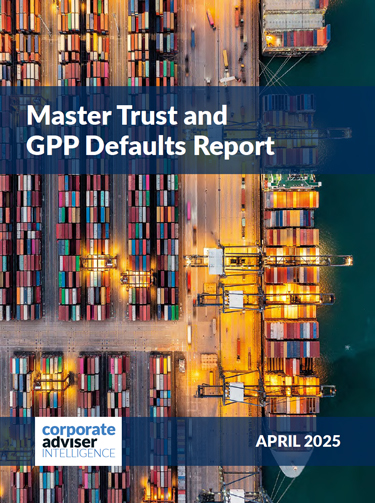We are in a new era for defined benefit schemes, with many experiencing substantial surpluses that could offer a significant financial boost to corporate sponsors. The government is enabling schemes to release such surpluses, and many corporates are now examining the implications.
The upside for companies and scheme members could be substantial. The Pensions Regulator estimates that the aggregate surplus in well-funded pension schemes amounts to over £160bn, around £24,000 for every member of a scheme in surplus.
But if a sponsor releases assets from its pension scheme, rather than using a surplus to pursue an insurance buy-out, it commits to running that scheme for the longer term. Addressing the remaining risks within that scheme becomes paramount.
Many DB schemes currently have a healthy surplus and are well-hedged, minimising the impact of market movements on their solvency. This stability was evident following President Trump’s tariff announcements in early April. Despite significant fluctuations in equity and bond markets, the overall effect on pension fund solvency was minimal. This is because schemes have largely hedged their exposure to interest rate and inflation risk. Large allocations to gilts and high-quality corporate bonds, primarily to ensure they have can afford projected future cashflows, mean market movements also have a limited impact.
Attention has therefore turned to longevity risk, which is typically the last and largest unhedged risk for DB schemes. These schemes promise specified pension payments to retirees, so if beneficiaries live longer than expected, the total liabilities of the scheme increase. As a result, longevity risk can be significant. With the advent of ongoing medical innovations, it could become all the more so, with hugely effective weight-loss drugs already in use, and research into various cancer and dementia treatments making significant progress.
The threat of longevity risk has driven some schemes to target an insurance buy-out or buy-in transaction, whereby some or all of a scheme’s assets and liabilities are transferred to an insurer, including associated longevity risks.
However, government plans to enable and encourage schemes to release surplus assets have highlighted the cost and irreversibility of a buy-in or buy-out, relative to running on a pension scheme for the longer term. The financial benefits available from releasing surplus assets could transform a corporate’s fortunes and open up many more options, as well as providing a positive impact for members. Consequently, many sponsors are now considering other options for addressing longevity risk.
Longevity swaps are a clear alternative. Under such a structure, a pension scheme pays a series of fixed cashflows to a reinsurer, and the reinsurer agrees to pay cashflows in return that cover pensions due to a cohort of scheme members, removing any uncertainty associated with members’ longevity.
In recent years, longevity swaps have become increasingly attractive, with some costs reducing due to falling life expectancy projections and competition in this market. Reinsurers have also become more willing to take on longevity risk associated with non-pensioners, and to accept a wider range of assets as eligible collateral.
These improvements – which have helped to lower costs, offered wider coverage, and incorporated greater flexibility in managing longevity risk – have been clear positive steps. They mean such swaps can help further reduce the risk that a corporate might need to make future contributions to a scheme, and they can also be beneficial when a scheme finally conducts a buy-out in the future, reducing or removing exposure to changes in an insurer’s view of life expectancy, supporting a straightforward transfer of risk at this point. We are now approaching even more meaningful improvements that will address the remaining obstacles to longevity hedging for some schemes: overall costs and time to implementation.
Transformational approaches currently in the pipeline could open up longevity hedging to many schemes including smaller ones. This would give corporates confidence in their DB schemes, meaning they could then focus on how best to release and use surplus assets, assured that members’ retirement income is secure and future contributions are likely to be minimal.





